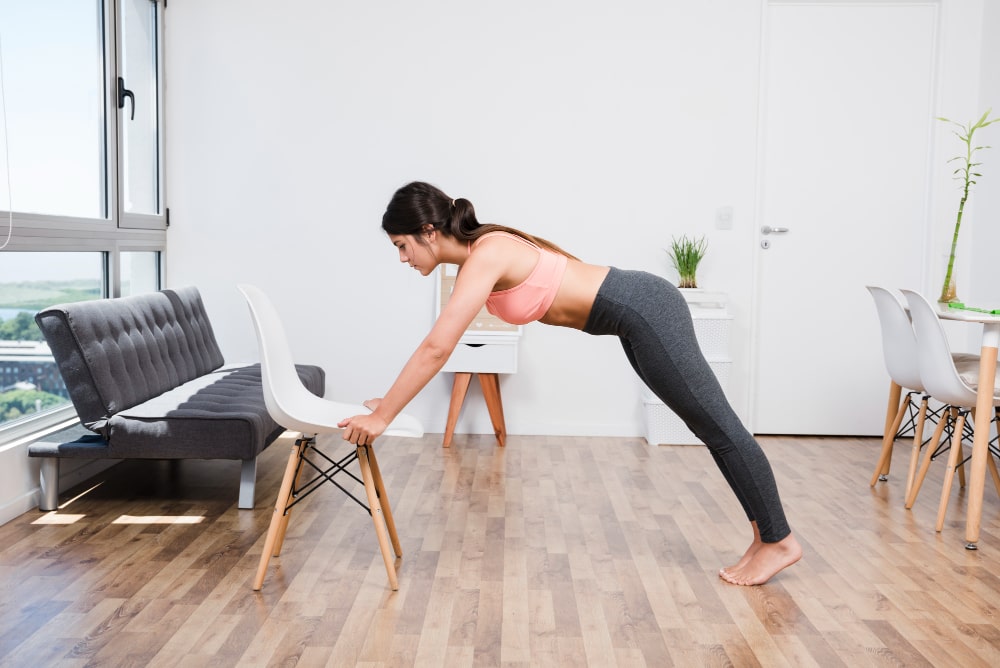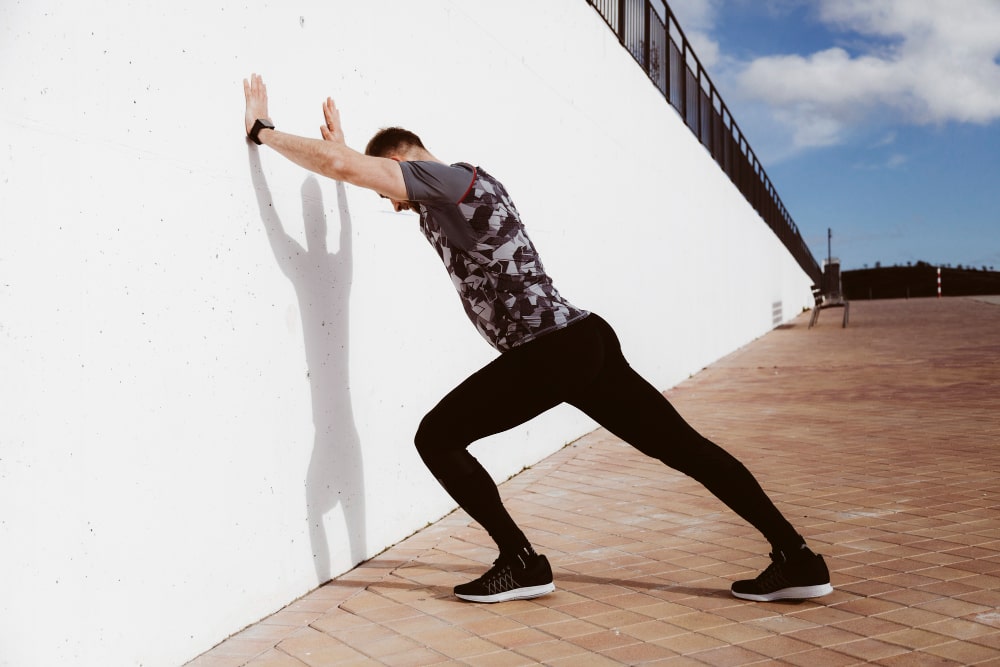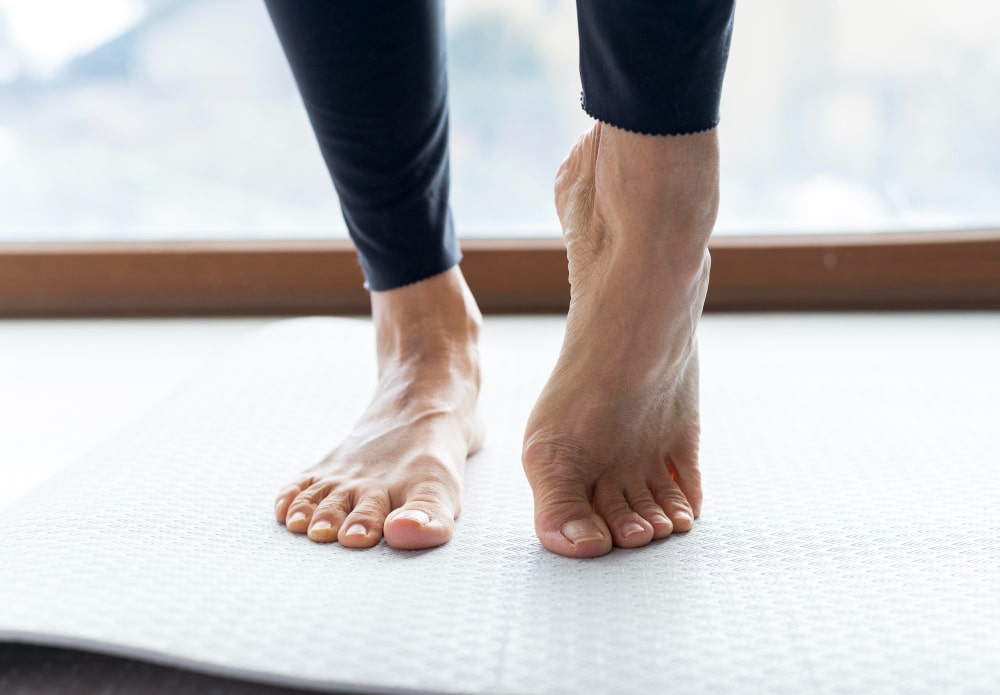Achilles tendonitis is a common condition that causes pain and discomfort along the back of the foot. If left untreated, it can lead to serious complications such as reduced mobility and permanent damage. However, effective stretching exercises can help reduce inflammation and keep the affected area flexible. In this article, we’ll discuss the importance of properly stretches for Achilles tendonitis and provide instructions and additional tips on how to do so.
Understanding Achilles Tendonitis
Achilles tendonitis is an inflammation of the Achilles tendon, the tissue band connecting your calf muscles to your heel bone. It’s often caused by overuse or repetitive strain Injury (RSI). Common symptoms include pain and stiffness in the affected area, difficulty walking, and swelling around the ankle. Achilles tendonitis can also limit the range of motion in the lower leg.
What is Achilles Tendonitis?
Achilles tendonitis is an overuse or repetitive strain injury that affects the Achilles tendon, which runs from your calf muscles to your heel bone. It occurs when the tendon becomes inflamed due to excessive stretching and lifting activities. Common symptoms of Achilles tendonitis include pain and stiffness in the affected area, difficulty walking, and swelling around the ankle.
Read More: How to Make Mango Nectar Juice: A Taste of Tropical Paradise
Causes of Achilles Tendonitis
Achilles tendonitis is usually caused by overuse or repetitive strain Injury (RSI). It can be caused by activities such as running, jumping, and lifting heavy objects. Other causes include shoes that don’t provide enough support, weak calf muscles, or poor flexibility in the lower leg.
The Importance of Stretching
Stretching can be an effective way to reduce pain and improve range of motion if done correctly. It’s important to stretch the Achilles tendon regularly to prevent injury. Regular stretching helps keep the tendon flexible and strong, which can minimize your risk for future injury.
Benefits of Stretching for Achilles Tendonitis
Stretching can be beneficial for those with Achilles tendonitis. It helps to reduce pain and improve range of motion in the lower leg. Regular stretching also helps to strengthen the tendon, which makes it less prone to injury. Furthermore, stretching can increase blood flow to the area, promoting healing.
When to Stretch
It’s important to stretch the Achilles tendon both before and after activity. Stretching before an activity helps to reduce the risk of injury and can help improve performance. After an activity, stretching can help alleviate pain and speed up recovery time. Ensure not to stretch too much or too soon after an injury; wait until your doctor or physical therapist has given you the green light.
Read More: Benefits of Green Juice: How to Make Green Juice at Home?
Effective Stretches for Achilles Tendonitis
It’s important to use effective stretches when dealing with Achilles tendonitis. Here are some of the best stretches for this condition:
1) Calf Stretch

The calf stretch is a simple but effective stretches for Achilles tendonitis. To do this Stretch:
- Stand about arm’s length away from a wall and put your hands on the wall.
- Step one foot back and bend the front knee while keeping the back leg straight.
- Hold for 10-30 seconds and repeat three times on each leg.
2) Plantar Fascia Stretch

The plantar fascia stretch is another great stretches for Achilles tendonitis. To perform this Stretch:
- Sit with one leg extended and the other bent at a 90-degree angle.
- Arrive down and grab your toes with both hands, gently pulling them towards you until you feel a stretch in the bottom of your foot.
- Keep for 20-30 seconds and recount three times on each side.
3) Standing Wall Stretch

The standing wall stretch is a simple but effective way to stretches the Achilles tendonitis. Start by standing with your feet shoulder-width apart and arms extended in front of you, palms flat against a wall. Step one foot back so your heel touches the floor while keeping the rest of your body upright. Maintain for 20-30 seconds and replicate three times on each side.
4) Toe Flexor Stretch
The toe flexor stretch is an effective way to stretches the Achilles tendonitis. Sit in a chair and cross one leg over the other, keeping your toes pointed up. Gently pull on your toes with both hands until you feel a stretch in your calf muscles and Achilles tendon. Maintain for 20-30 seconds and repeat three times on each side.

Read More: Does Insulin Make You Gain Weight?
5) Eccentric Heel Drop
The eccentric heel drop is a great stretches for Achilles tendonitis. Start by standing with one foot off a step or ledge so your heel hangs off the edge. Lower your heel as far as you can, then raise it back up. Do this 10 to 15 times and repeat on the other side.
6) Stair Stretch
The stair stretch is an effective way to stretches the Achilles tendonitis. Stand at the bottom of a flight of stairs facing up and place one foot on the first step. Bend your knee slightly and lower your heel until you feel a stretch in your calf muscles and Achilles tendon. Preserve for 20 to 30 seconds and repeat three times on each side.

7) Seated Stretch
The seated Stretch is a great way to stretches the Achilles tendonitis. Sit with your legs straight and one foot off the floor, keeping your toes pointed up. Reach down and grab the toes of that foot, gently pulling them towards you until you feel a stretch in your calf muscles and Achilles tendon. Retain for 20-30 seconds and replicate three times on each side.

8) Foam Rolling
Foam rolling is an effective way to stretches the Achilles tendonitis. To do this, roll a foam roller up and down the length of your calf for 1-2 minutes. This will help release tension in the muscles and tendons, providing relief from soreness and improving flexibility.

Read More: Sugar Free Cranberry Juice: Easy to Make at Home
Proper Stretching Technique
Preparing for Stretching
When stretching, it’s important to warm up first. Start by doing light aerobic exercises such as walking or jogging for 5-10 minutes. This will help to loosen the muscles and tendons in your lower legs, making them more flexible and responsive to stretching.
Technique Matters
It’s also important to use proper technique when stretching. Move slowly and gently, allowing your body time to adjust to the Stretch. Hold each Stretch for 10-30 seconds without bouncing or jerking the muscle. If you feel pain while stretching, stop immediately and consult a doctor before continuing.
Stretching Regularly
Finally, it’s important to make stretching a part of your routine. Aim to stretch at least three times a week to keep the muscles and tendons in your lower legs healthy and flexible. This can help reduce the risk of future injury and improve performance.
Prevention of Achilles Tendonitis
In addition to stretching, there are some other steps you can take to help prevent Achilles tendonitis:
1) Proper Footwear
Choosing the right shoes is an important step in preventing Achilles tendonitis. Make sure to choose comfortable shoes and provide good support and cushioning. Shoes with a wide toe box can help reduce pressure on the Achilles tendon, while arch support is important for proper foot alignment.
Read More: Top 11 Cucumber Juice Benefits: How to make Cucumber Juice?
2) Warm Up
Make sure to warm up before any activity that involves repetitive strain or stretching of your Achilles tendon. Start with a few minutes of light activity, such as walking or jogging, and progress to dynamic stretching exercises that involve movement. This will help prepare your body for more strenuous activity.
3) Strength Training
Strength training is important in the prevention of Achilles tendonitis. Ensure to focus on strengthening your calf muscles, improving flexibility, and reducing tension in the Achilles tendon. Exercises such as calf raises, step-ups, and heel drops are all effective for strengthening your calves.
Additional Tips for Managing Achilles Tendonitis
Rest
Rest is an essential part of recovering from Achilles tendonitis. Avoid any activity that aggravates the condition, and give yourself adequate time to rest between workouts. Additionally, you may need to apply ice or use a compression wrap for relief.
Professional Treatment
If your symptoms are severe or don’t improve with self-treatment, it’s best to seek professional help. Your doctor or physical therapist can guide stretches and other treatments that may help relieve your symptoms.
Shoes and Orthotics
Choosing the right shoes is important for preventing Achilles tendonitis and managing existing symptoms. If you have flat feet, you may benefit from orthotics, which can help reduce the strain on your Achilles tendon and provide extra cushioning.
Read More: How to Make Aloe Vera Juice: Nutrition Facts, Benefits, Recipes
Proper Technique
Make sure to use proper technique when engaging in any activity that involves stretching or repetitive strain on your Achilles tendon. Poor form can increase the risk of injury, so focus on slow, controlled movements and proper posture.
Taking care of your Achilles tendon is essential for avoiding pain and injury. By following these tips, you can help keep your Achilles tendon healthy and prevent the onset of Achilles tendonitis.
Exercises to Avoid
When managing Achilles tendonitis, there are some exercises that you should avoid. These include running on hard surfaces, hill sprints, and calf raises with weight. Additionally, any exercise that causes pain should be avoided until the condition fully recovers.
You can keep your lower legs healthy and improve performance by avoiding these exercises and preventing Achilles tendonitis.
Conclusion
In conclusion, taking care of your Achilles tendon is essential for maintaining good health and avoiding injury. Stretching regularly, using proper technique when engaging in activity, selecting the right shoes and orthotics, and avoiding exercises that cause pain can help you keep your Achilles tendon healthy and prevent or manage the onset of Achilles tendonitis. By following these tips, you can enjoy an active lifestyle with fewer restrictions.
Read More: 12 Best Fruits for Weight Loss: A Comprehensive Guide
FAQs
The length of time it takes for Achilles tendonitis to heal depends on the severity of your condition. Minor cases may only require a few weeks of rest and stretching, while more severe cases may take several months to heal. In all cases, it’s important to seek professional help if symptoms persist or worsen. Most Achilles tendonitis cases can be successfully treated with proper treatment and rest.
If your Achilles tendon is still painful after stretching, it’s important to consult your doctor. Your doctor may recommend further treatment, such as physical therapy, orthotics, or a brace or boot. Additionally, they may suggest medications for pain relief or other treatments such as ultrasound or steroid injections. It’s important to seek professional treatment to ensure the best possible outcome.
If you have Achilles tendonitis, it’s essential to avoid any activity that involves repetitive strain or stretching of your Achilles tendon. Avoid running on hard surfaces, hill sprints, and calf raises with weight. Additionally, any exercise that causes pain should be avoided until the condition fully recovers.
Yes, you can try some home remedies to help manage your symptoms of Achilles tendonitis. These include taking non-steroidal anti-inflammatory medications (NSAIDs) such as ibuprofen or naproxen, resting the affected area, applying ice to the tendon several times daily, and stretching regularly. However, if your symptoms don’t improve with home treatments, seeking professional help is best.
Some supplements may help with the symptoms of tendonitis. These include vitamin C, which is thought to reduce inflammation and promote collagen production; glucosamine sulfate, which may reduce pain and inflammation; and omega-3 fatty acids, which can improve joint health and reduce pain. It would be best to speak with your doctor before taking supplements to ensure they are safe.
Also, drink plenty of water, as staying hydrated can help speed up the healing process. Additionally, try to eat foods rich in vitamins and minerals, such as fruits and vegetables, lean proteins, and whole grains. These can give your body the nutrients it needs to heal and help reduce inflammation.

